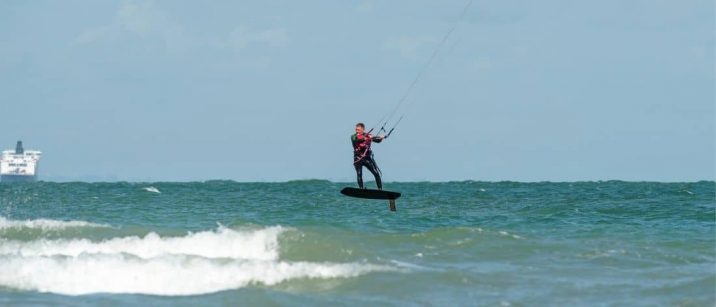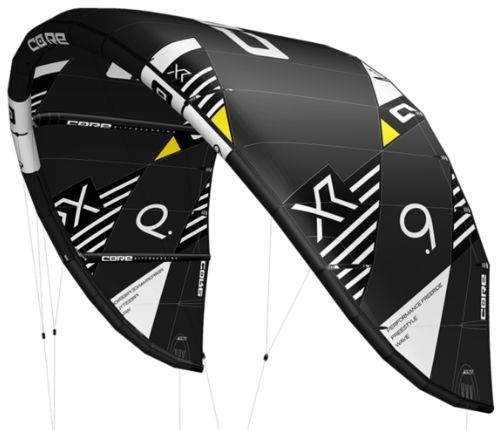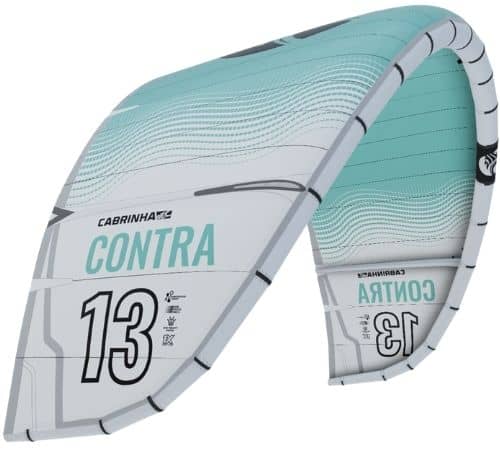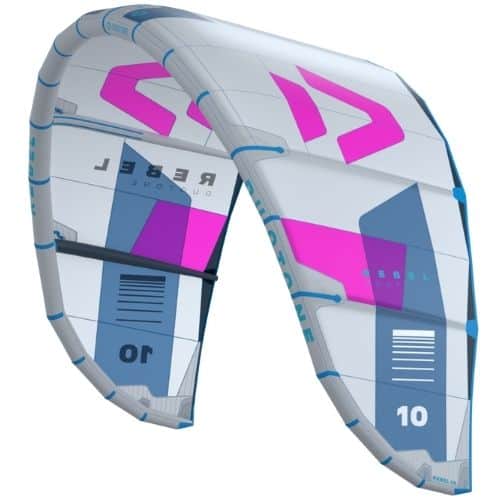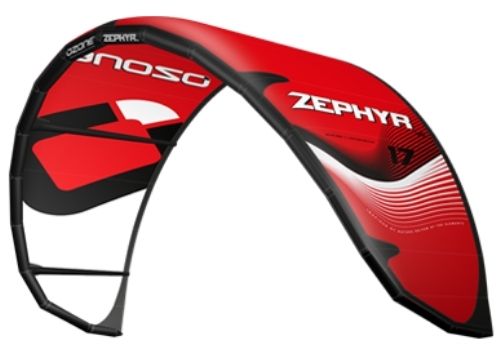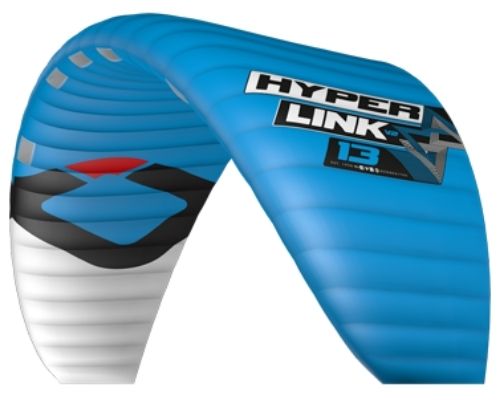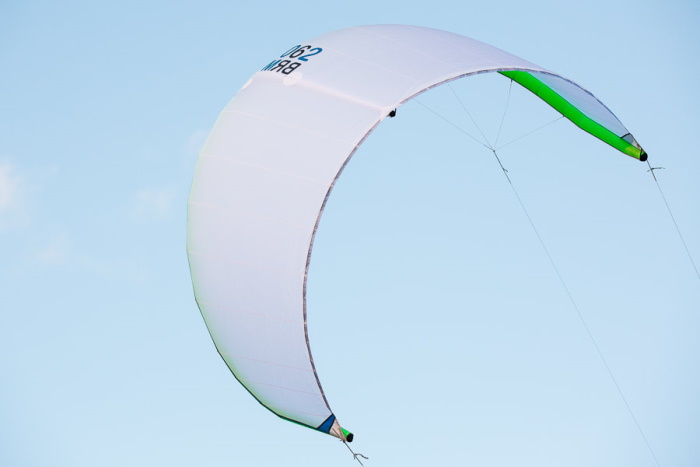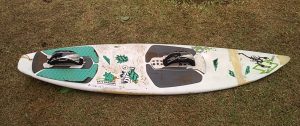It’s every kiter’s dream to be able to keep riding fast and easy in light wind. Light winds generally mean winds between 10 and 14 knots, unless we’re including kite foiling, which allows riding in even lower wind speeds.
If you’ve tried riding in such winds, however, chances are you may had experienced disappointing sessions with an inability to ride upwind or even with your kite crashing without being able to relaunch.
These are our top 7 kites for light wind:
| Lightwind kite | Remarks |
|---|---|
| Core XR6 17m | 5-strut, wide wind range |
| Cabrinha Contra 15m | 3-strut, good upwind sub 10kn |
| Duotone Rebel 15m | 5 struts, good for jumping |
| Ozone Zephyr 17m | 5-strut, fast turning for the size |
| Ozone Hyperlink (foiling) | Ram kite, very light wind (6-7kn) |
| Airush Ultra (foiling) | 1-strut, great for LW waves or lake |
| Cloud kite (foiling) | Strutless, very low end |
Table of Contents
Core XR7 17m for light wind
The XR7 is CORE’s five strut Delta Bow kite. This kite has a wide wind range due to the pulleys on the bridle. The kite responds very well even when depowered or sheeted out.
The XR7 is very stable in light wind and great for foiling. The LW version has special canopy fabric for light wind. XR’s are typically very durable and stay strong even after countless rides.
The 17m is particularly good for popping and gliding in light winds. That said, you can still ride it comfortably up to 20 knots without losing control – and get phenomenal boost.
Older versions of the XR are also great. Some riders like the XR4 more than the XR5 LW for light wind because the former flies further forward in the window, making it faster and better upwind. The XR4 also gives you more pop for jumps in light wind.
Cabrinha Contra 15m for light wind
The 3-strut 15 or 17m Cabrinha Contra gives you a great amount of power in light wind under 10kn. It has a normal kite and doesn’t have that slowmo feel other lightwind kites often have – you can keep your normal riding style when flying the Contra.
This kite feels responsive and direct even in really light winds (7 – 10 kn). It makes riding upwind with easy due to its good pull, so that you can keep riding even without a foil. Unlike other LW kites, the Contra’s high aspect ratio helps it sit forward in the wind window.
The high range of the Contra is not the best but it can hold itself up to 16-17kn with the right edging and flying skills. In these higher winds the kite boosts superbly.
Duotone Rebel 15m for light wind
The 15m Rebel is another great tried and tested kite for light wind. The 2020+ versions will work well in 15-23 knots for a 220lb rider using 27 to 32m lines. In these conditions, the Rebel will allow for small jumps as well.
The newer 15m Rebels have improved hangtime and turning speed in lower wind compared to the older versions. That said, it’s not really fast turning, which makes it easy to control.
Like many other lightwind kites,, the 15m Rebel tends to backstall a bit in light wind during tight turns if oversheeted,
It’s easy to jump on the Rebel – you can easily get to 7m in 15 knots with 5 second glide time. Going really high, however, requires good technique.
Ozone Zephyr 17m for light wind
The Ozone Zephyr is a 5-strut kite. Similar to the (3-strut) Contra, it feels very much like a normal kite despite its large size and doesn’t pull you too hard, unlike many other LW kites. Many riders feel the Zephyr is as responsive and turny as a 13m.
This kite generally considered livelier and faster turning than the Contra 17m – which is more of a park and ride type kite.
That said, the low-end range is not as great as the Contra e.g. for heavier riders – some say the Zephyr feels more like a 15m for wind range.
If you’re light to medium weight, and the wind is on the light side but picking up, the Zephyr 17 is often a good choice as it holds up in stronger wind. The Zephyr also has a good high end and remains stable and reliable up to 20 knots, in part due to the 5 strut construction.
Many riders love this kite for freerace wing foiling in 8 to 12 knots.
Ozone Hyperlink for light wind (foiling)
The Hyperlink ram kite is an outstanding lightweight foiling kite. The 12m will more than adequately power a 185lb rider in 10 knots on a surfboard, or under 10 knots on a foilboard.
The Hyperlink is extremely lightweight and shines the most when paired with a big foil wing in very light wind. With this kind of setup, this kite can get you going from as low as 6 or 7 knots.
The 9m will hold up well in higher winds (e.g. 16 kn) on a foilboard. It will also perform quite well when paired with a twintip in 14 to 24 knots.
The Hyperlink has grunt and a direct bar feel reminiscent of a LEI kite due to the bar’s direct feedback. Meanwhile, the kite is very stable with virtually no drift down or to either side, allowing for almost hands off riding.
Airush Ultra for light wind (foiling)
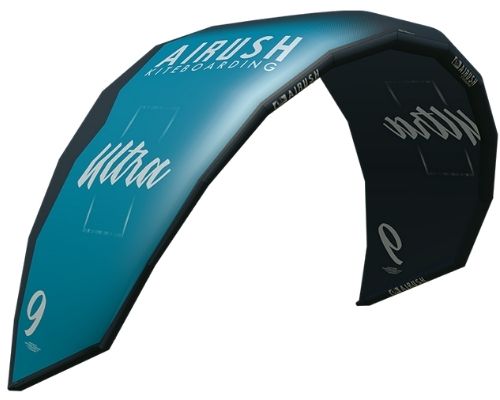
The Airush Ultra is a super light one-strut kite than stays up in the air with almost no wind. It’s very easy to fly and almost never stalls or falls from the sky. It’s has a reputation of being a quality built, durable kite.
The Ultra drifts downwind very well, making it an excellent lightwind option for foiling and waves. The 15m version is light enough to foil in as little as 7 knots.
This kite has incredible low wind capabilities but is probably not the best choice for twintip and staying upwind. It doesn’t handle gusts as well as other kites. Nor is it the greatest big air kite as the one-strut design doesn’t offer the best hangtime and sits relatively low in the window.
It also tends to flap when overpowered in higher winds, which unexpected for a single strut kite.
For most riders, though, the Ultra’s downwind abilities in light wind largely make up for these limitations. It’s also a fast turning kite which is good for waves.
The Ultra is a good option for inland riding where lulls are frequent. It’s very suitable for drift launching due to its light pull. It’s very stable in big lulls, easy to relaunch and self land even when overpowered.
Cloud kite for light wind (foiling)
The Cloud E is specially designed for kitefoil freestyle and surfing in very light winds. It focuses on low end responsiveness, power, hangtime, and relaunch.
A 165lb rider can ride a 6.2 strutless Cloud kite in 10-15 knots wind, and a 10.4m Cloud in 7-12 knots.
The Cloud is a great option for foiling in 8 to 15 knots and still have great fun. A 10.4m Cloud will fly fine in 10 knots with a directional kiteboard.
Features of a good lightwind kite (buying guide)
What kind of kites work best for light winds? Good light wind kite will continue to fly in low wind and will only crash when the wind drops to really low levels.
Light wind kite weight
Traditionally, bigger kites were heavier than smaller kites. A traditional 17m Duotone Rebel weights more than the 9m. Even though it has a larger surface which allows it to fly in lower wind, the added weight means you still need some wind to keep it up in the air.
Newer light wind kinds are now much lighter. Since they are designed to fly in low winds, they don’t require as much reinforcement as kites meant to fly in strong winds.
Light wind kites also require thinner, lower density Dacron (the material the leading edge is made of), and can use thinner and lighter material for canopy and bladder.
As a result, lighter weight kites drift better and stall less, relaunch easier, turn faster, require less wind to fly, and are more responsive and stable.
Light wind kite design
Besides the lighter weight material, larger modern light wind kites have different designs than their smaller siblings, more conducive to flying in low winds.
For example, they have flatter canopy shapes and to maximize surface area, wind efficiency, and hence power.
Of course, flatter canopies mean smaller wingtips, which tends to reduce turning speed.
Light wind kite strut construction
Another key factor when choosing a light wind kite is construction. Single strut kites are more lightweight than 3 or 5-strut ones, especially in larger sizes (15-17m). Strutless kites (foil kites) are even lighter.
Single and no-strut kites are often able to fly in very low winds (7-8 knots for no-strut foil kites) without dropping from the sky. This makes them particularly well-suited for foiling and surfboard.
There’s a tradeoff, though: these kites generally don’t have as good a high-end as 3 or 5-strut kites with more structure. They tend to flap a lot in sharp turns, and are not so good for jumps. They’re also trickier to relaunch.
You typically need to rig down early if he wind picks up. Meanwhile, other kites with 3 or 5 struts start to light up for jumps, e.g. with a twintip.
A good middle ground for light wind are the newer light construction 3-strut kites, such as the Ocean Rodeo Flite, which offer great low end while still retaining good jumping abilities in higher winds.
Light wind kite durability
Some believe light wind kites are less durable than regular kites because of the lighter reinforcements. The reality, however, is that single strut kites and foil kites with ultralight construction are just as durable as inflatable kites.
Kite size vs board size for light wind
Some riders don’t enjoy riding large kites (e.g. 17m) in light winds as they feel slow, tend to fall out of the sky in lulls, and are sometimes hard to relaunch. Some believe you should never go over a 13-14m size kite for an average weight rider in light wind.
Generally speaking, for a given board size, you’ll need to increase your kite size by 1m for every extra 10 kg of rider weight.
Some riders, though, choose to go for a bigger board instead of sizing up their kite in light wind. “Door” boards with lengths 150+ cm, flatter profiles, and larger widths, offer a large area between the feet, allowing the board to plane early in lower wind.
A larger and wider light wind board can let you shave 2m off your kite size. With a smaller kite and larger board, a 175-185 kg rider can have some fun starting at 12-13 knots. S/he can also continue to ride the same kite in higher winds with a smaller board.
On the minus side, door boards are not great for carving and toeside riding, and tend to suck to the water when jumping. They can also be painful when landing flat at speed.
For boosting in light winds, you’ll generally need both a bigger board and a bigger kite – e.g. 17m to do 5m jumps in 14 knots.
Hydrofoil kites for light wind
Foiling lets you ride in much lower winds with smaller kites compared to riding a twintip. Typically, you rarely need to go bigger than 12-13m for your kite on a hydrofoil – 15-17m kites are generally way too big.
The following compares light wind kite sizes required for foiling vs twintip for an average size rider in light winds:
| Kite size with foil | Kite size with twintip | |
| 8 – 10 knots | 13m LW kite | Raincheck! |
| 10 – 12 knots | 10m KW kite | 15-17m kite + door board |
| 12 – 14 knots | 8m LW kite | 15m kite + door board |
Check out the most popular foiling kites here on Green Hat.


